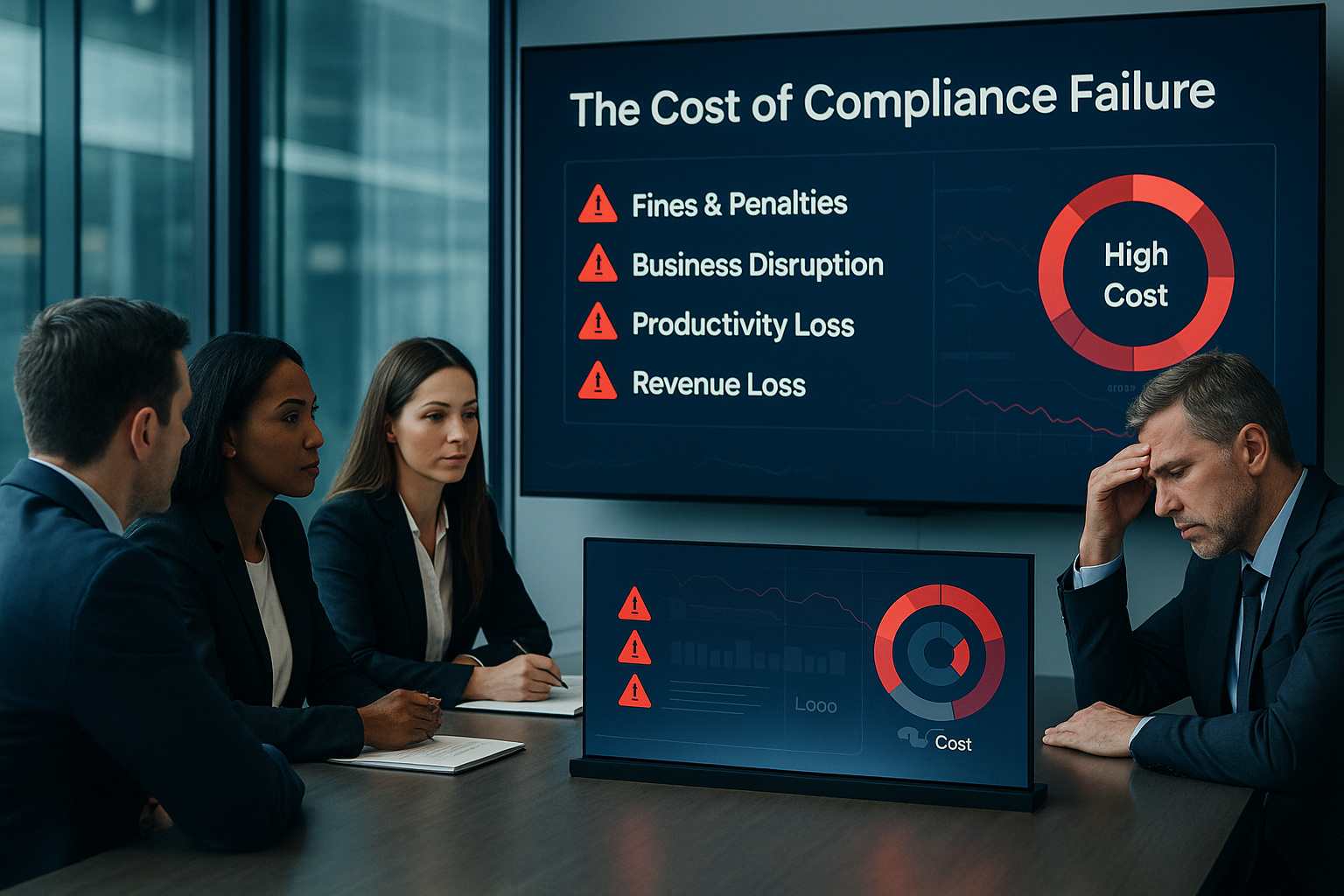The Illusion of Progress
Compliance today looks modern on the surface. Executives log into dashboards that glow with red, yellow, and green risk scores. Checklists are neatly completed and filed. Shared drives overflow with policies and attestations, organized in folders that appear audit-ready. It feels like progress.
But appearances can be deceptive. When a regulator, board member, or auditor asks the hard questions—Why did we escalate this? How exactly does this tie to a requirement? What changed and when?—many programs stumble. The tooling shows activity but not reasoning. It captures a collection but not a connection. And in compliance, a conclusion without explanation is not defensible. That gap is what we refer to as the illusion of progress.
Why Old Tools Fall Short
If existing dashboards and frameworks look polished, why do they break down under scrutiny? Because they capture what happened but rarely explain why.
Dashboards are excellent at visualizing trends, but a red spike doesn’t tell you which obligation is implicated or how the system reached its conclusion. Checklists bring order to complexity, yet rules shift faster than templates can be updated, leaving yesterday’s box-tick out of step with today’s standard. Keyword searches seem precise but only retrieve exact matches. A discriminatory phrase in a job posting or risky wording in a marketing campaign may slip right past fixed lists. And storage systems do little more than archive evidence, without connecting it to obligations or providing a trail of reasoning.
Individually, each of these tools has value. Together, they leave compliance officers doing the most challenging work manually: chasing context across inboxes, back-explaining decisions to auditors, and carrying the liability for gaps that static tools never surface. The result is more effort, more rework, and ultimately less confidence in the program’s ability to stand up when it matters most.
The Stakes of Standing Still
The risks of standing still are not hypothetical; they are real. Regulators increasingly expect organizations to capture the logic behind compliance decisions, not just the artifacts. In the U.S., several judges now require attorneys to certify whether AI was used in filings—signaling that opaque systems will no longer be accepted in legal or compliance workflows.1,2 At the same time, Gartner reports that more than half of enterprises see generative AI as an emerging risk, precisely because its outputs cannot be explained.3
The human costs are also rising. When tools only highlight signals without providing context, employees are left to piece together evidence from scattered systems. That detective work slows down responses, contributes to burnout, and shifts experts away from the high-value judgments only they can provide. Organizations end up paying twice: once in wasted time, and again when they cannot convincingly defend their actions after the fact.
Invisible risks don’t disappear — they just wait. Effective compliance programs surface risks before the illusion of progress leaves organizations exposed.
Empowering, Not Replacing
This is where Lexa Shield enters—not as a substitute for dashboards or checklists, but as the missing layer that turns activity into defensible logic. Traditional tools track progress; Lexa Shield explains it.
Its role is to supplement, not replace. Dashboards remain helpful in monitoring trends. Checklists still help structure routine workflows. What Lexa Shield does is connect those signals back to obligations in real time, surfacing risks that static tools overlook. Designed to deliver consistent, repeatable outputs tied to standards. Instead of leaving professionals to “backfill the why,” it provides them with a transparent trail they can point to when questions arise.
This distinction matters. Compliance is not about software checking boxes; it is about professionals making defensible decisions. Lexa Shield strengthens—not substitutes—human judgment by equipping teams with the context and evidence they need to stand behind every call.
A risk unchallenged is a risk accepted. The future of compliance will belong to those who can explain it, not just display it.
Looking Ahead
The future of compliance will not be defined by more dashboards, longer checklists, or bigger repositories. It will be shaped by whether organizations can respond to three converging pressures:
- Regulations that evolve faster than static tools can keep pace.
- Workloads that expand while resources stay flat.
- Rising expectations of transparency from regulators, boards, and customers.
Legacy approaches create the appearance of control. Lexa Shield fosters accountability that can withstand scrutiny in a boardroom or a courtroom. For leaders deciding how to modernize their programs, the question is no longer whether tools look efficient—it is whether their results can be explained, defended, and trusted.
Lexa Shield represents the next step in compliance intelligence: a protective layer built for the realities of modern risk. It does not compete with dashboards or frameworks. It completes them—turning data into decisions, and activity into answers.
References
- United States District Court for the Northern District of Texas. (n.d.). Judge Brantley Starr. U.S. District Court, Northern District of Texas. https://www.txnd.uscourts.gov/judge/judge-brantley-starr
- Mata v. Avianca, Inc., No. 1:22-cv-01461 (S.D.N.Y. June 22, 2023). https://law.justia.com/cases/federal/district-courts/new-york/nysdce/1:2022cv01461/575368/54/
- Gartner, Inc. (2023, August 8). Gartner survey shows generative AI has become an emerging risk for enterprises [Press release]. https://www.gartner.com/en/newsroom/press-releases/2023-08-08-gartner-survey-shows-generative-ai-has-become-an-emerging-risk-for-enterprises

